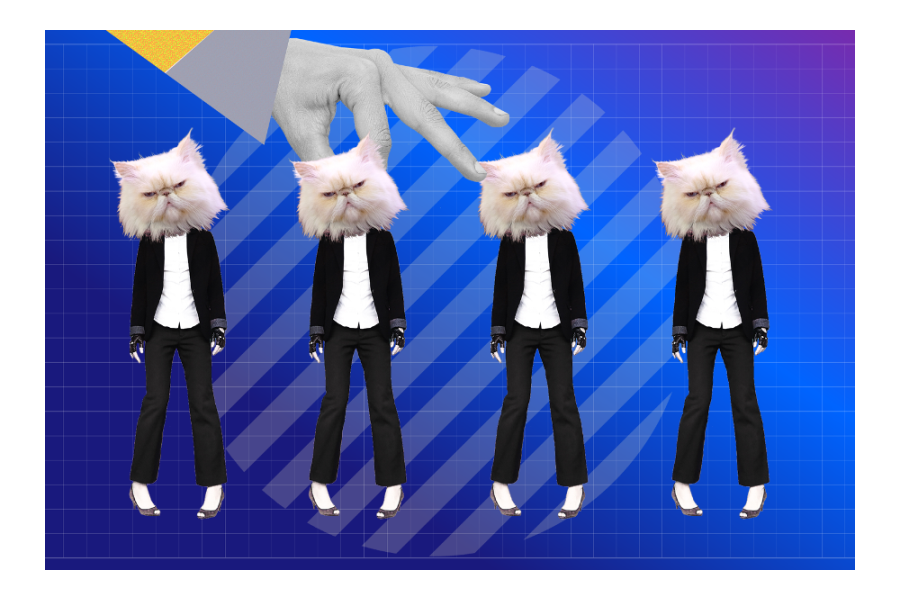The £150 incentive worked like a charm; in all, 1.5 million customers switched their current account over the last year, which was a big tick for the bank’s acquisition objective. Any upper hand they gained over their competitors though was likely temporary; people perceived most banks (them included) as indistinguishable. Megan, their head of CX (Customer Experience), knew well that their newfound clientele could unreservedly chase a new, more orange carrot…unless of course they dialed up the emotional resonance with customers; all consumers, even the potential ones.
Megan’s company, one of the largest banks in Europe, has had a yo-yo relationship with the concept of loyalty over the years. A decade ago, their loyalty-first strategy plateaued their growth. More recently, their wide mass-market net deprioritized long-term customers, who felt they were not put first. So, when Megan put forward her two-year CX plan, she presented concrete evidence that in financial services, people’s predisposition towards a brand largely relies on their experiences with it.
A good experience matters more than advertising in getting your brand chosen

She proceeded to detail the three actions they would take to capture choices from other banks and make consumers’ experience stronger, more positive, and authentic to her brand.
Action #1: Boost memories
Our data proves that, in financial services, experiences count more than exposures. This means that the flavor that banks leave behind (app, website, customer care, ATM, recommendations etc.) matters more than the promises they make via their advertising; it’s these interactions that play the most important role in making a choice.
Experience-related touchpoints contribute 58% of total predisposition

There is also strong evidence to suggest that if each one of these touchpoints hums the same emotive tune, the memories created are stronger and their impact on the brand’s market share is greater.
Megan made sure that the CX and Brand teams joined forces to identify and ‘fix’ two important touchpoints in the purchase journey. First, the website (the gateway for prospects): despite being functional, it didn’t make new customers feel at home, it didn’t imbue a sense of trust and its conversion to consideration was weak. Secondly, the live chat (the app most frequently used by existing clients): it answered questions but felt like a transactional interaction – it was not distinctive enough and easily forgettable, it could be any bank’s chat service.
Acting like a scrum team, Megan’s CX team, together with the Brand team, injected the bank’s values into both touchpoints and turned them from moments that matter into moments to consider. Both revamped encounters transcended functionality and recommendation to imprint in people’s memories and stack the preference odds in their favor.
Action #2: Be easy to buy and easy to choose
Megan and her team know that people tend to bank with more than one provider. All the more reason to stay top of mind for new products, and ruthlessly show up at every touchpoint to snatch every opportunity. First, they traced people’s increasingly messier purchase journeys. Then, they made their products and services physically available at each interaction, but also easier to buy: flexible payment options, better pricing structures, sweeter savings rates, wider ranges of mortgages and business loans…all hassle free.
By effectively being more present at the next point of purchase, our bank naturally captured choice from their competitors.
Action #3: Stand out
Our BrandZ data confirms that customers who felt experiences made their bank seem more Different are twice as likely to say they have no interest in exploring alternative banking providers.
As the CX and brand teams soaked in the marinade of a shared workstream, they set out to break the mold of generic experiences. They treated every interchange as a high-potential moment in time, a moment where a customer’s need (the human-centric) would meet the brand’s expression of its own personality (the brand- centric). Inspired by other brands that got to this magical place of on-brand experience (think of Mastercard’s sonic identity, Singapore Airlines’ Stefan Florida Waters customized fragrance, Starbuck’s loyalty program or American Airlines ‘You might want to pick an umbrella’), they set out to create their own meaningfully different experiences.
They had two criteria: 1. Did they deliver on customers’ needs? and 2. Did they do this in ways that could only be associated with their own brand? Then and only then, would people be more likely to advocate for their bank over the dinner table and help increase their Trustpilot and Which? scores to drive acquisition and maintain retention.
Better experience = Better market share
Undoubtedly, communications play a role in building brand perceptions that frame and skew people’s experience. They have a big impact on our purchase intent, bigger than just seeing an ad or just experiencing a brand. But experience itself remains underutilized: new evidence from Kantar revalidates the commercial power of experience: brands that improve their experience are 2.5x more likely to significantly improve their market share.
Brands that improve their experience are far more likely to increase their market share

How can you tell if your CX program is a driver for change?
ExperienceStrength is a competitive research solution that evaluates how well the experience meets customer needs, builds an emotional connection, and creates a sense of difference from other providers to help you stand out in a sea of sameness. The more this shifts, the healthier your performance and preference indicators are, and the greater the uplift in your market share.
Experiences fuel brand memories, ‘the thing’ behind our decisions
Experiences play a vital role in creating brand-relevant memories that get brands bought. But not all memories are equal, nor do they all stack up well against competition. Bestselling authors, renowned restaurateurs and leading behavioral scientists have tried to solve the puzzle of our memories of experiences. You can have a lot of mediocrity as long as there are some moments that are special, Dan Heath advises in his ‘Build peaks, don’t fix potholes’ entreaty, while Will Guidara lobbies for unreasonable hospitality in every sector. For Daniel Kahneman, it’s the final part of an experience that dominates our remembering self: the self who lives on to tell the story and make the decisions.
But for us at Kantar it’s the inimitable on-brand experience that makes the difference. Could your experience be associated with another brand? If the answer is ‘no’ or ‘not easily’, then you’ve created a consistent, distinctive, unexpected, magically different experience that will positively impact on your business’s bottom line. Megan and her CX team are tracking well in creating their own meaningfully different experiences. Each is rooted in consumers’ needs, each is linked to their bank in an unbreakable way, each generates a positive excess of thoughts and feelings that won’t easily fade away. It’s only a matter of time before they see the knock-on effect on their market share.
Whether you are starting now or are an established brand, our promise is this: Blueprint for Brand Growth will help you stay on track to sustainable growth and healthy profits.


